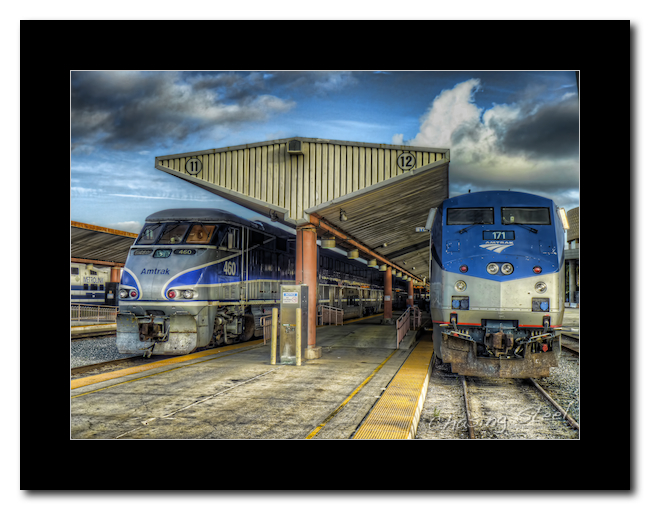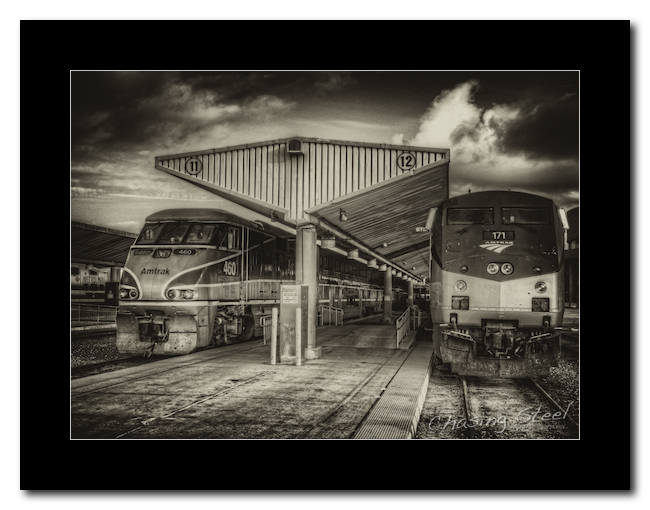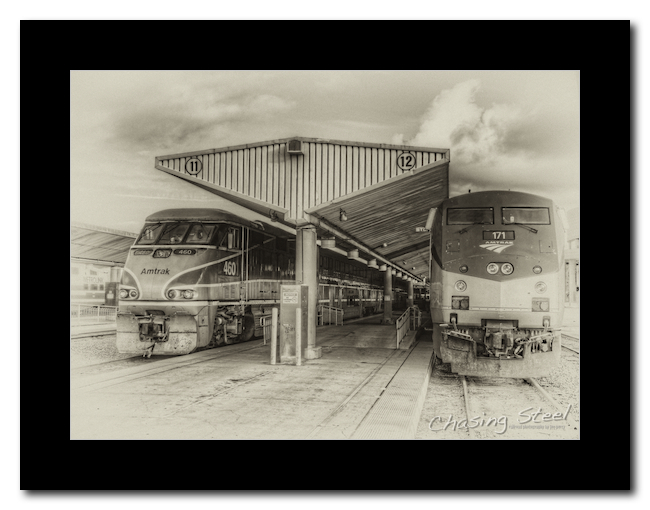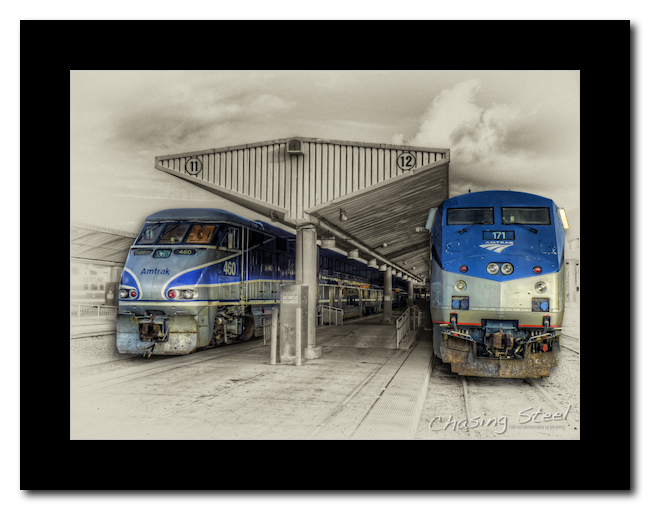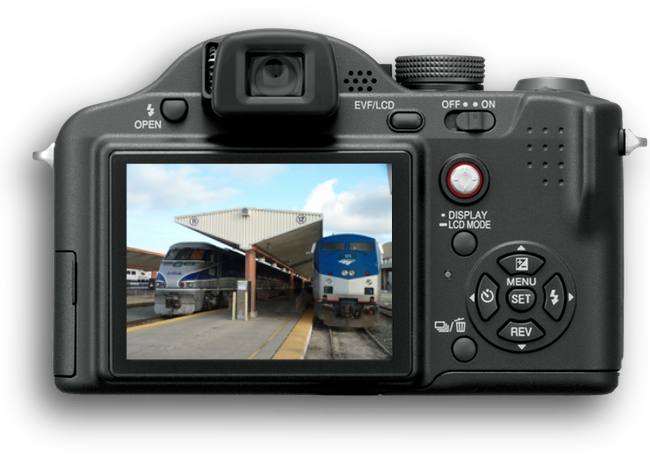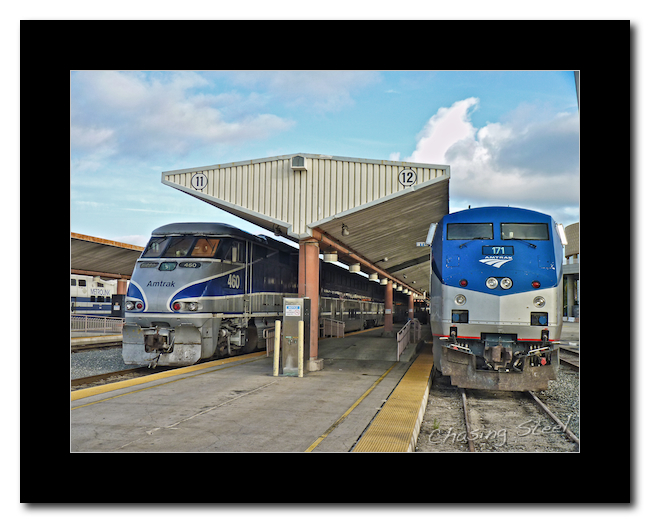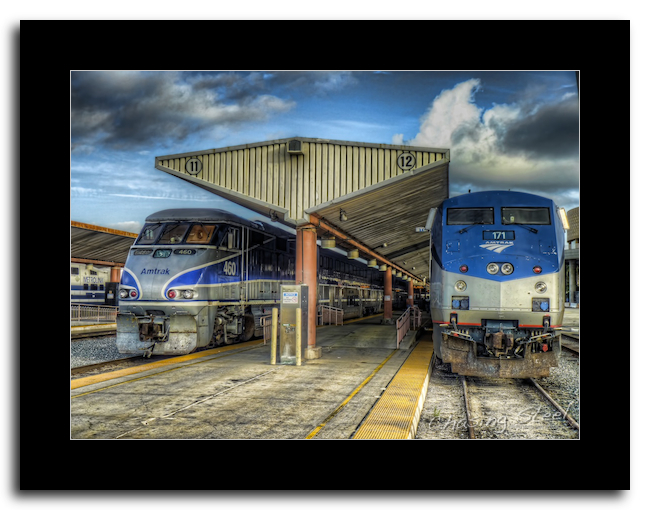San Timoteo Canyon Steel
A couple of weeks ago I was able to venture out and chase steel for a few hours. After careful consideration, I opted to head towards Union Pacific’s Yuma Subdivision. In particular, I headed for the western edge of the subdivision which traverses the San Timoteo Canyon and constitutes the western slope of the formidable Beaumont Hill. While the traffic levels aren’t as high as one might find on the BNSF’s Cajon Subdivision, the area is extremely accessible and offers some great scenery and sweeping curves.
I arrived shortly after sunrise and picked a spot that seemed promising. I waited for a bit and then I heard a hotbox detector announcement on the radio that indicated a westbound would be passing my location shortly. Sure enough, I heard the horn blowing for the road crossings east of me.
Once the train arrived on scene I snapped the following images:
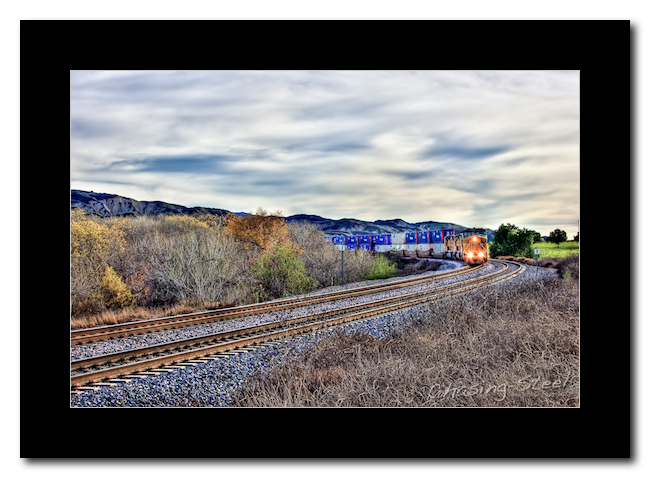 UP 9667 West at El Casco, CA 1 - UP 9667 (GE C44-9W) leads a trio of EMD SD70Ms; 3901, 3893, and 4965, on the point of an early morning doublestack consist with 200+ COFC/TOFC loads at El Casco, CA. [1/16/2011 - Yuma Subdivision] © Copyright 2011, Joe Perry
UP 9667 West at El Casco, CA 1 - UP 9667 (GE C44-9W) leads a trio of EMD SD70Ms; 3901, 3893, and 4965, on the point of an early morning doublestack consist with 200+ COFC/TOFC loads at El Casco, CA. [1/16/2011 - Yuma Subdivision] © Copyright 2011, Joe Perry
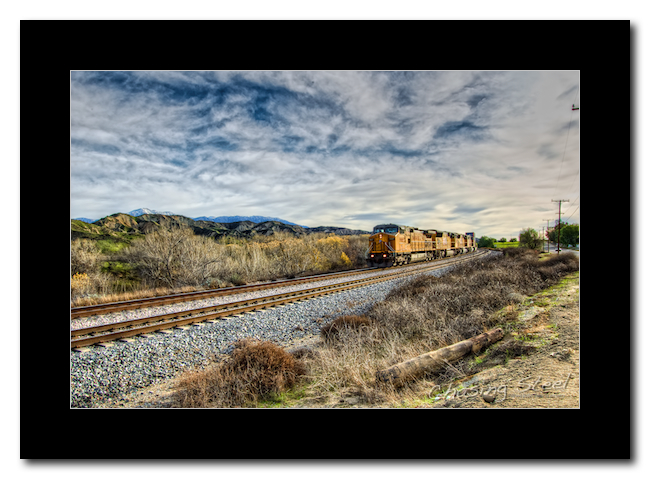 UP 9667 West at El Casco, CA 2 - UP 9667 (GE C44-9W) leads a trio of EMD SD70Ms; 3901, 3893, and 4965, on the point of an early morning doublestack consist with 200+ COFC/TOFC loads at El Casco, CA. [1/16/2011 - Yuma Subdivision] © Copyright 2011, Joe Perry About ten minutes later an eastbound could be heard approaching through the trees west of my location. After a five minute wait the train appeared and I took these two shots:
UP 9667 West at El Casco, CA 2 - UP 9667 (GE C44-9W) leads a trio of EMD SD70Ms; 3901, 3893, and 4965, on the point of an early morning doublestack consist with 200+ COFC/TOFC loads at El Casco, CA. [1/16/2011 - Yuma Subdivision] © Copyright 2011, Joe Perry About ten minutes later an eastbound could be heard approaching through the trees west of my location. After a five minute wait the train appeared and I took these two shots:
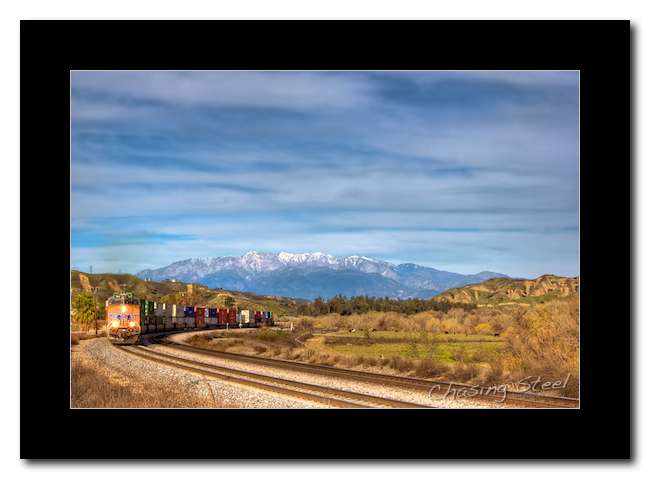 UP 7812 East 1 - UP 7812 (GE ES44AC) and UP 4909 (EMD SD70M) provide the head-end power for this eastbound intermodal with UP 8658 (EMD SD70ACe) handling the DPU duty on the rear-end as this eastbound handles the curves of the western Yuma Subdivision at El Casco, CA. [1/16/2011 - Yuma Subdivision] © Copyright 2011, Joe Perry
UP 7812 East 1 - UP 7812 (GE ES44AC) and UP 4909 (EMD SD70M) provide the head-end power for this eastbound intermodal with UP 8658 (EMD SD70ACe) handling the DPU duty on the rear-end as this eastbound handles the curves of the western Yuma Subdivision at El Casco, CA. [1/16/2011 - Yuma Subdivision] © Copyright 2011, Joe Perry
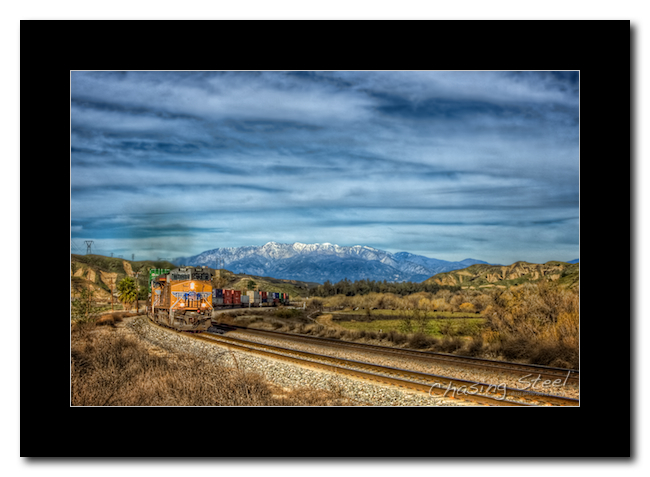 UP 7812 East 2 - UP 7812 (GE ES44AC) and UP 4909 (EMD SD70M) provide the head-end power for this eastbound intermodal with UP 8658 (EMD SD70ACe) handling the DPU duty on the rear-end as this eastbound handles the curves of the western Yuma Subdivision at El Casco, CA. [1/16/2011 - Yuma Subdivision] © Copyright 2011, Joe Perry
UP 7812 East 2 - UP 7812 (GE ES44AC) and UP 4909 (EMD SD70M) provide the head-end power for this eastbound intermodal with UP 8658 (EMD SD70ACe) handling the DPU duty on the rear-end as this eastbound handles the curves of the western Yuma Subdivision at El Casco, CA. [1/16/2011 - Yuma Subdivision] © Copyright 2011, Joe Perry
At this point the traffic dried up a bit and I didn’t want to wear out my welcome, since I was parked on the side of the road, so I followed the rails east. I made it all the way to Palm Springs without seeing, or hearing, another train. (Later I learned that a train had experienced an emergency condition that caused the train to stop on the main and tied up traffic. I never learned the caused the stoppage.)
I decided to call it a day and head home. On my trip home I did catch this empty eastbound vehicle train near Cabazon after the stoppage cleared and it became my favorite photo of the day:
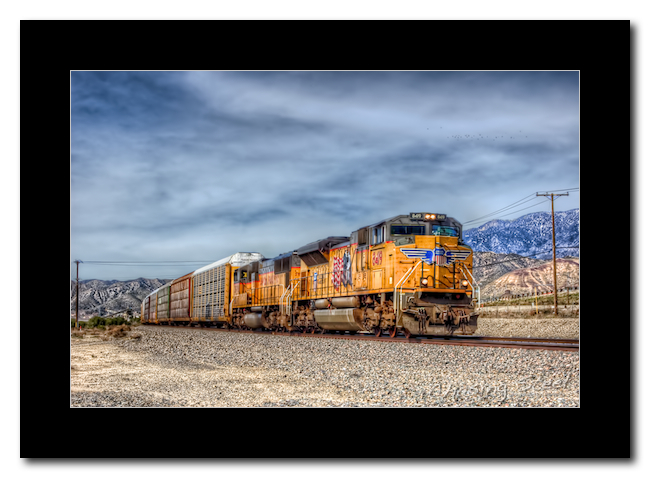 UP 8419 East - UP 8419 (EMD SD70ACe) and UP 3978 (EMD SD70M) are the only units assigned to hustle this empty vehicle train east - seen here near Cabazon, CA. [1/16/2011 - Yuma Subdivision] © Copyright 2011, Joe Perry
UP 8419 East - UP 8419 (EMD SD70ACe) and UP 3978 (EMD SD70M) are the only units assigned to hustle this empty vehicle train east - seen here near Cabazon, CA. [1/16/2011 - Yuma Subdivision] © Copyright 2011, Joe Perry
 HDR,
HDR,  San Timoteo Canyon,
San Timoteo Canyon,  Union Pacific,
Union Pacific,  Yuma Subdivision CATEGORIES:
Yuma Subdivision CATEGORIES:  General Photography,
General Photography,  Railroad Photography
Railroad Photography 
